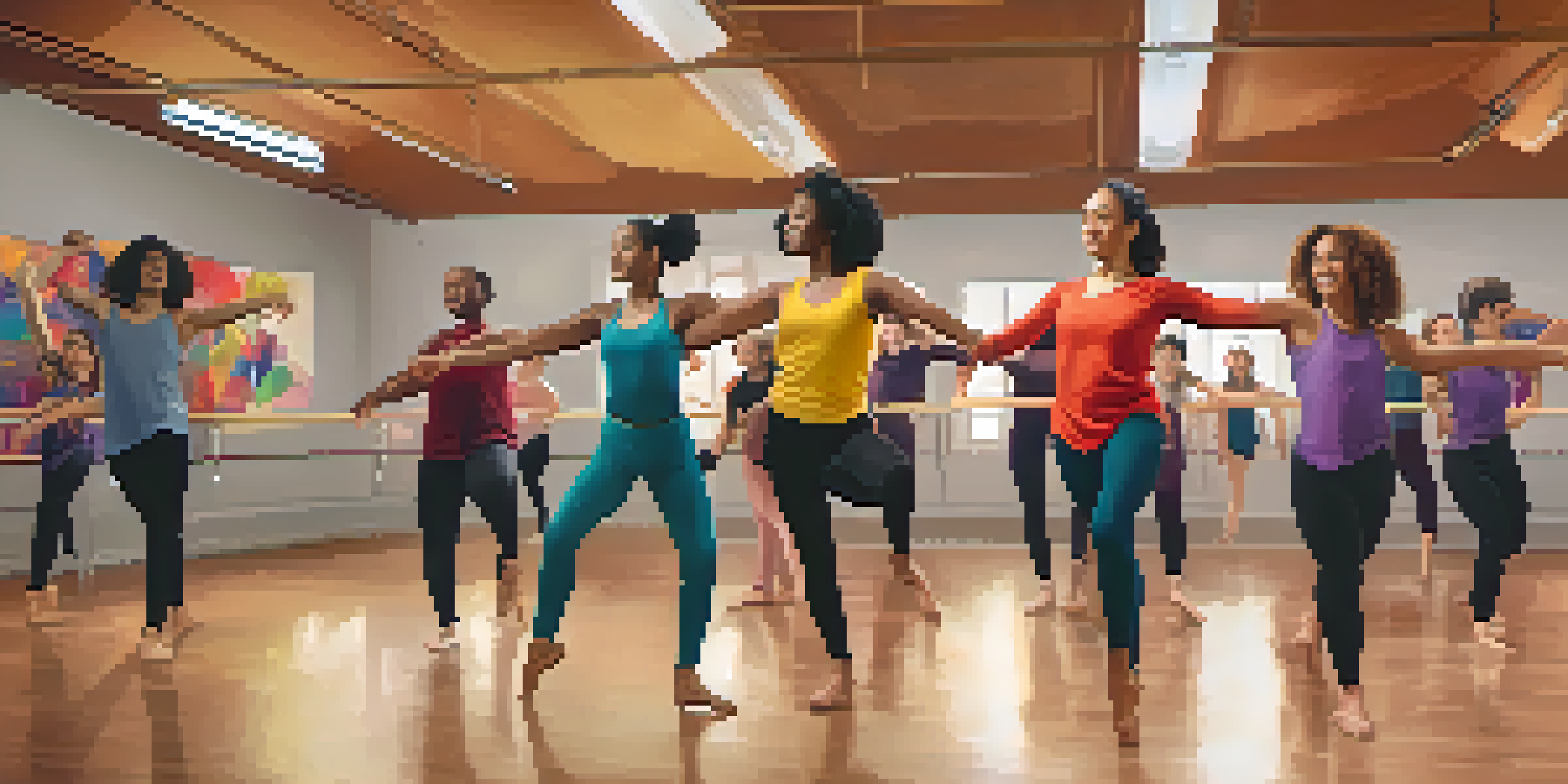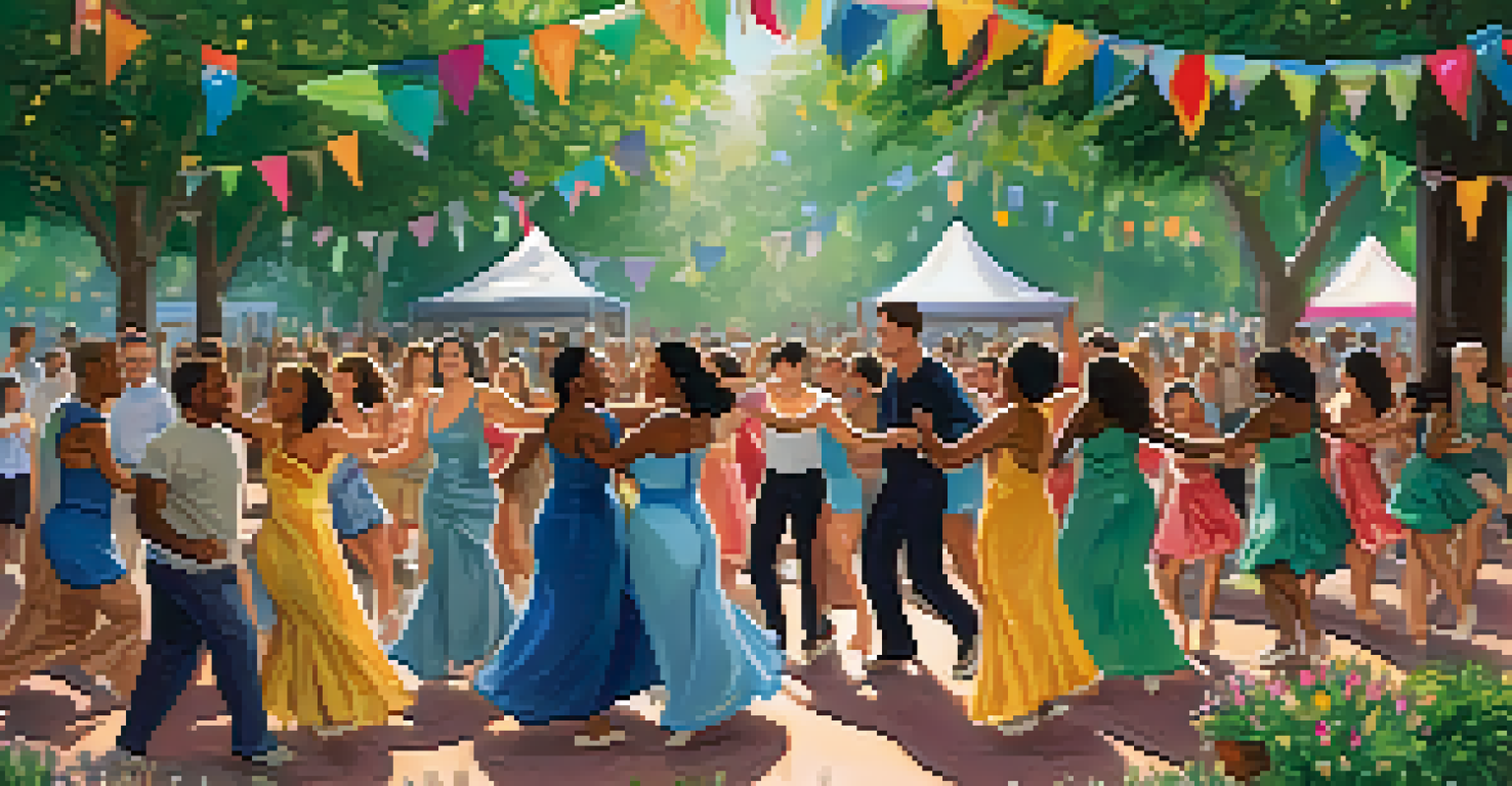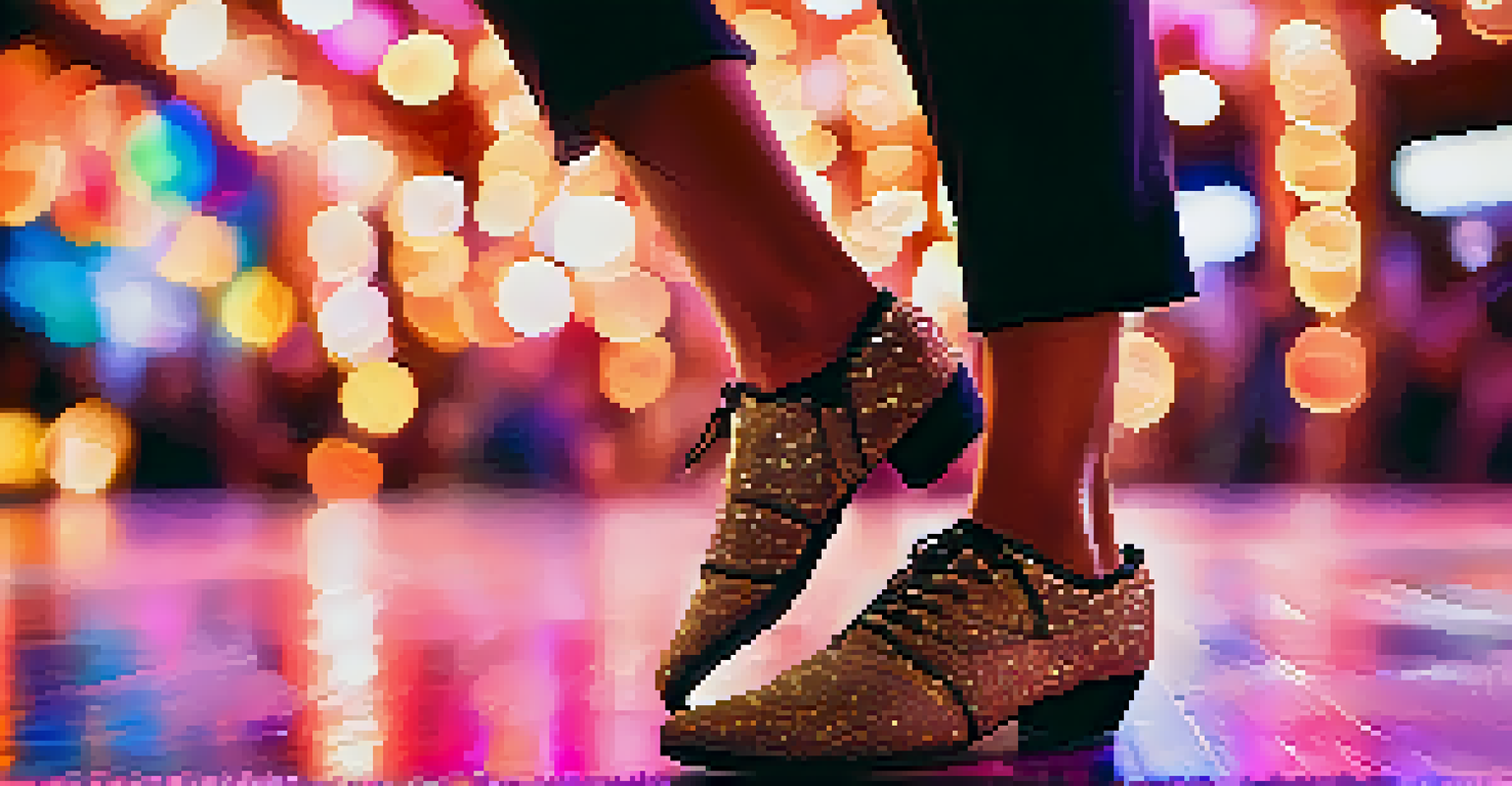Inclusive Dance: Creating Spaces for Neurodiversity

Understanding Neurodiversity in Dance Communities
Neurodiversity refers to the idea that variations in the human brain are normal and should be respected. In dance communities, embracing neurodiversity means recognizing and valuing the unique perspectives that individuals with conditions like autism, ADHD, and dyslexia bring to the art. This understanding can transform how we approach teaching, performing, and participating in dance.
Diversity is the one true thing we all have in common. Celebrate it every day.
By creating environments that acknowledge neurodiversity, dance spaces can become more inclusive, allowing everyone to feel welcomed and valued. Imagine a dance class where different learning styles and sensory needs are taken into account; this can lead to a richer, more diverse creative output. Ultimately, recognizing neurodiversity opens doors to new ways of expression and connection through movement.
Furthermore, fostering neurodiversity in dance can benefit everyone involved. When we adapt our classes to be more inclusive, we not only support neurodiverse individuals but also enhance the overall experience for all participants. This shared journey towards understanding and acceptance cultivates a stronger sense of community.
Creating Welcoming Dance Spaces for All Abilities
Creating welcoming dance spaces involves more than just physical accessibility; it requires a thoughtful approach to teaching and interaction. Simple changes, like using clear language and visual aids, can make a huge difference for neurodiverse dancers. Additionally, incorporating flexible class structures allows everyone to engage at their own pace.

Consider introducing sensory-friendly elements into your dance spaces, such as soft lighting, calming music, or quiet corners. These accommodations can help reduce anxiety and create a more comfortable environment for neurodiverse participants. By recognizing and addressing sensory needs, we can empower dancers to focus on their movement and creativity.
Embrace Neurodiversity in Dance
Recognizing neurodiversity enriches dance communities by valuing diverse perspectives and enhancing creative expression.
Moreover, building a culture of kindness and respect within the dance community encourages everyone to feel safe expressing themselves. When participants are encouraged to communicate their needs and preferences, it fosters an atmosphere of collaboration. This not only enhances the dance experience but also strengthens the bonds between dancers.
Adapting Dance Techniques for Diverse Learning Styles
Not every dancer learns the same way, particularly when neurodiversity is involved. Some may thrive with verbal instructions, while others respond better to visual demonstrations or hands-on guidance. By incorporating a variety of teaching techniques, dance instructors can ensure that all students have the opportunity to learn and express themselves.
The beauty of the world lies in the diversity of its people.
For example, using storytelling can enhance a dancer's understanding of choreography. When a narrative is tied to the movements, it can make the dance more relatable and easier to grasp. This approach not only aids comprehension but also allows dancers to connect emotionally with their performance.
Additionally, encouraging improvisation can be particularly beneficial for neurodiverse dancers. It offers them the freedom to explore movement in a way that feels natural and enjoyable. This flexibility helps build confidence and encourages individual expression, making the dance experience more fulfilling for everyone.
Celebrating Differences: Sharing Unique Perspectives
Every dancer brings their own unique perspective to the floor, and this is especially true for neurodiverse individuals. Celebrating these differences enriches the dance community and opens up new avenues for creativity. For instance, a dancer with autism might approach rhythm and movement in a way that others wouldn't consider, leading to innovative choreography.
Moreover, when neurodiverse dancers feel encouraged to share their experiences, it fosters empathy and understanding among their peers. Sharing personal stories can create powerful connections, allowing everyone to learn from one another. This exchange not only enhances the dance community but also promotes acceptance and appreciation of diversity.
Create Inclusive Dance Spaces
Welcoming dance environments that accommodate various learning styles and sensory needs empower all participants to thrive.
Creating performance opportunities that showcase the talents of neurodiverse dancers is another excellent way to celebrate differences. These events can highlight the unique contributions of each dancer, allowing them to shine in their own way. When audiences witness the beauty of diverse expressions, it broadens perspectives and encourages inclusivity.
Building Community Through Inclusive Dance Practices
Inclusive dance practices not only empower individual dancers but also strengthen community ties. When we prioritize inclusivity, we create a sense of belonging that extends beyond the dance floor. Participants can form friendships and support networks, fostering a welcoming environment for everyone involved.
Group activities, such as collaborative choreography or partner work, can enhance community spirit. These shared experiences encourage communication and teamwork, allowing dancers to learn from one another. By working together, participants can celebrate their strengths and differences, creating a rich tapestry of movement and expression.
Additionally, hosting community events focused on inclusive dance can bring together diverse groups. These gatherings allow for the exchange of ideas, techniques, and stories, enriching the overall dance experience. As connections grow, so does the understanding and appreciation for neurodiversity within the community.
The Role of Educators in Promoting Inclusivity
Dance educators play a crucial role in fostering inclusivity within their classes. By actively seeking to understand the needs of neurodiverse dancers, they can create tailored experiences that allow everyone to thrive. This includes ongoing education and training in neurodiversity to better support their students.
Moreover, educators should advocate for inclusive policies within dance organizations and studios. By promoting practices that prioritize neurodiversity, they can help shape a more accepting and supportive environment for all dancers. This advocacy ensures that inclusive dance becomes the norm rather than the exception.
Celebrate Unique Dance Perspectives
Encouraging neurodiverse dancers to share their experiences fosters empathy and enhances the overall dance community.
Ultimately, the passion and commitment of educators can pave the way for a more inclusive dance community. Their influence extends beyond the classroom, inspiring dancers to embrace diversity in all its forms. When educators lead by example, they instill values of kindness, understanding, and acceptance in their students.
The Future of Dance: Embracing Neurodiversity Together
As we look to the future, it’s essential to continue embracing neurodiversity in the dance world. The more we advocate for inclusive practices, the more we can break down barriers and create spaces where everyone feels valued. This ongoing commitment has the potential to revolutionize how we experience dance.
With advancements in technology and a growing awareness of neurodiversity, opportunities for inclusive dance will only expand. Virtual classes, online communities, and innovative teaching methods can reach even more individuals. This evolution allows for a broader understanding of movement and expression, fostering a diverse dance landscape.

In conclusion, by prioritizing inclusivity and celebrating neurodiversity, we can create vibrant dance communities that reflect the beauty of our differences. Together, let’s continue to champion a dance culture where everyone can thrive, express themselves, and connect through the power of movement.